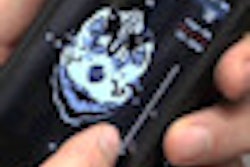Tuesday, November 27 | 9:10 a.m.-9:20 a.m. | VSIN31-03 | Room E351
Researchers have concluded that Microsoft's Kinect, Apple's iPad, and a motion-sensing device similar to those used in gaming consoles could all be used to review real-time intraoperative images in the interventional radiology (IR) suite.The current study followed up on prior work that showed potential for Kinect to help interventionalists view and manipulate intraoperative images in real-time without having to "scrub out." As a result, the team also sought to adapt the iPad and the Hillcrest Labs Loop Pointer, a device that uses gyroscopic sensors similar to those employed by Nintendo's Wii, said presenter Dr. Cherng Chao, a fourth-year resident at the University of California, San Diego Medical Center.
While both devices worked well, the researchers wanted to compare all three devices for the task. They surveyed 29 radiologists, asking them to perform a simulation of the most common tasks performed by radiologists.
All three devices were judged to have addressed the main criteria for intraoperative use, such as the ability to be used in a sterile environment, Chao said.
"Most of the surveyed radiologists, including interventionalists, saw the potential usefulness of these new devices in the IR suite," he said. "Most also did not think that the devices would have problems with preserving the sterile field in the IR suite, particularly with the Kinect."
Chao said he will also share some surprising results in his talk on the analysis of prior radiologist experience with the devices, as well as their experience with computers and video games.




















